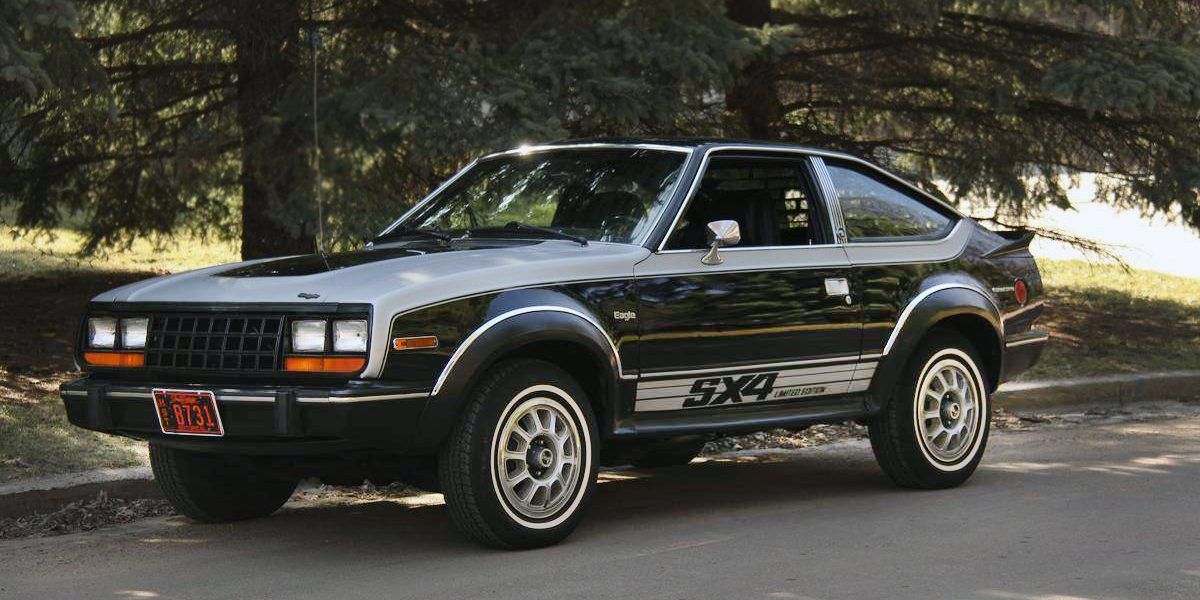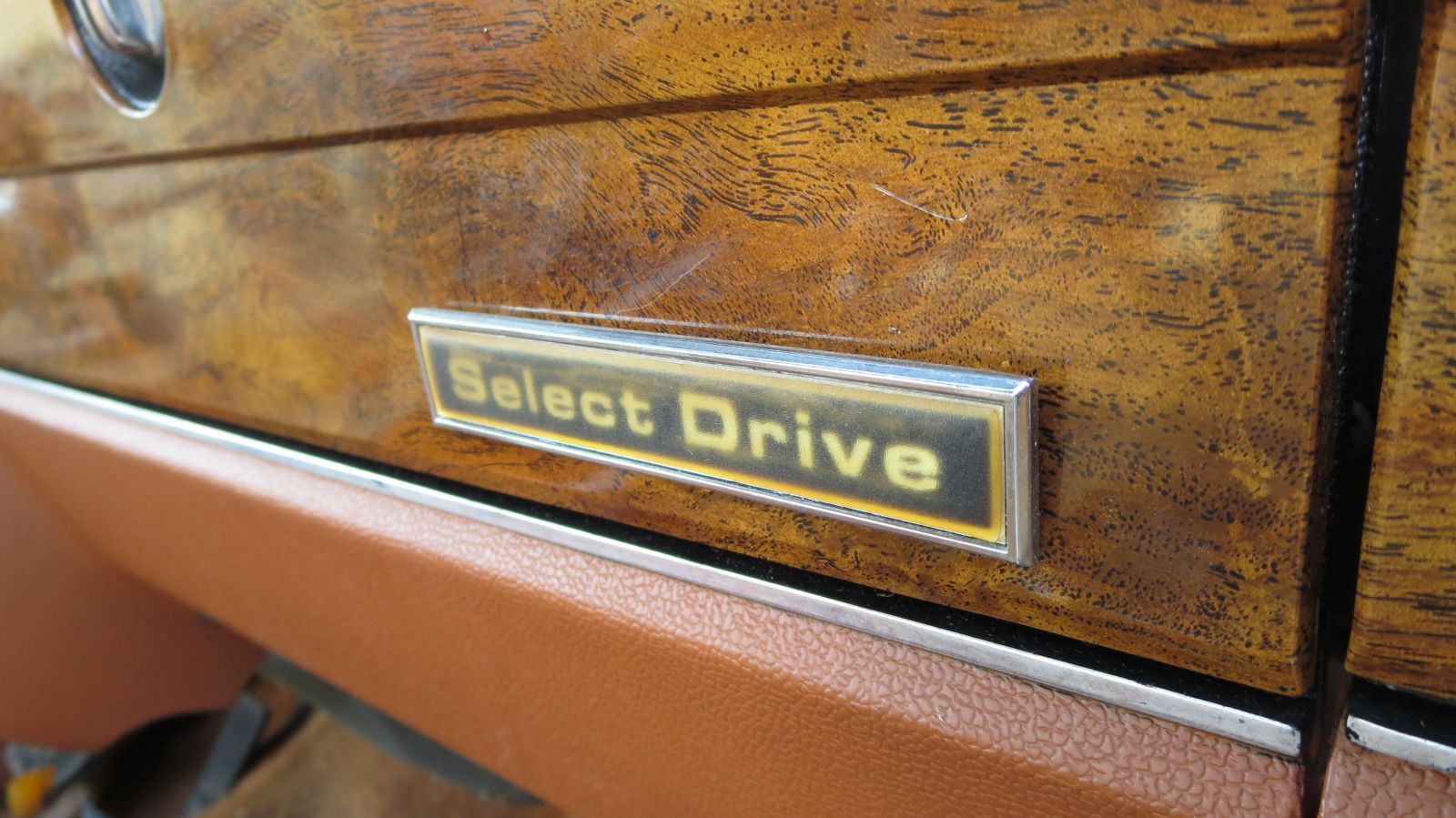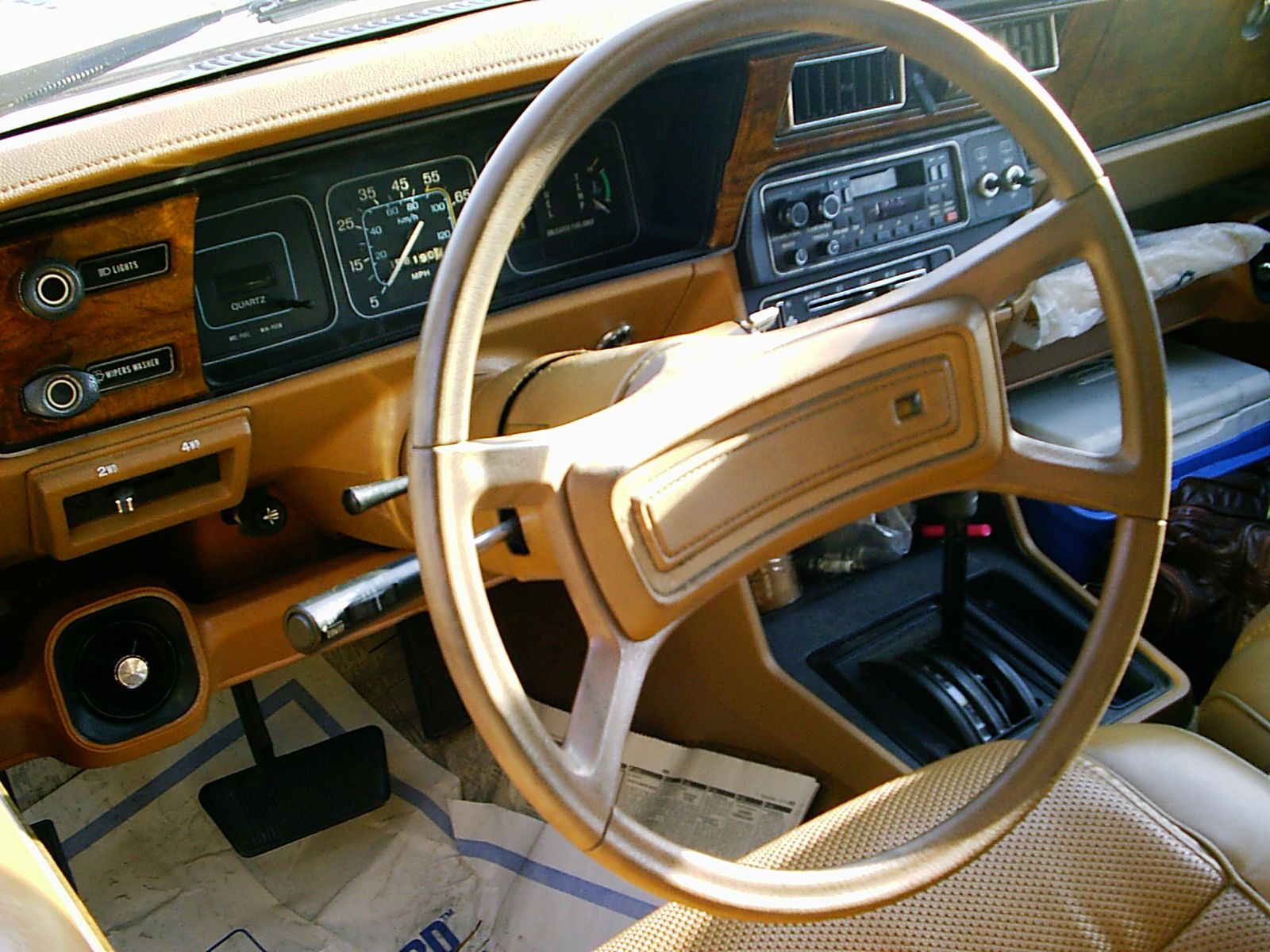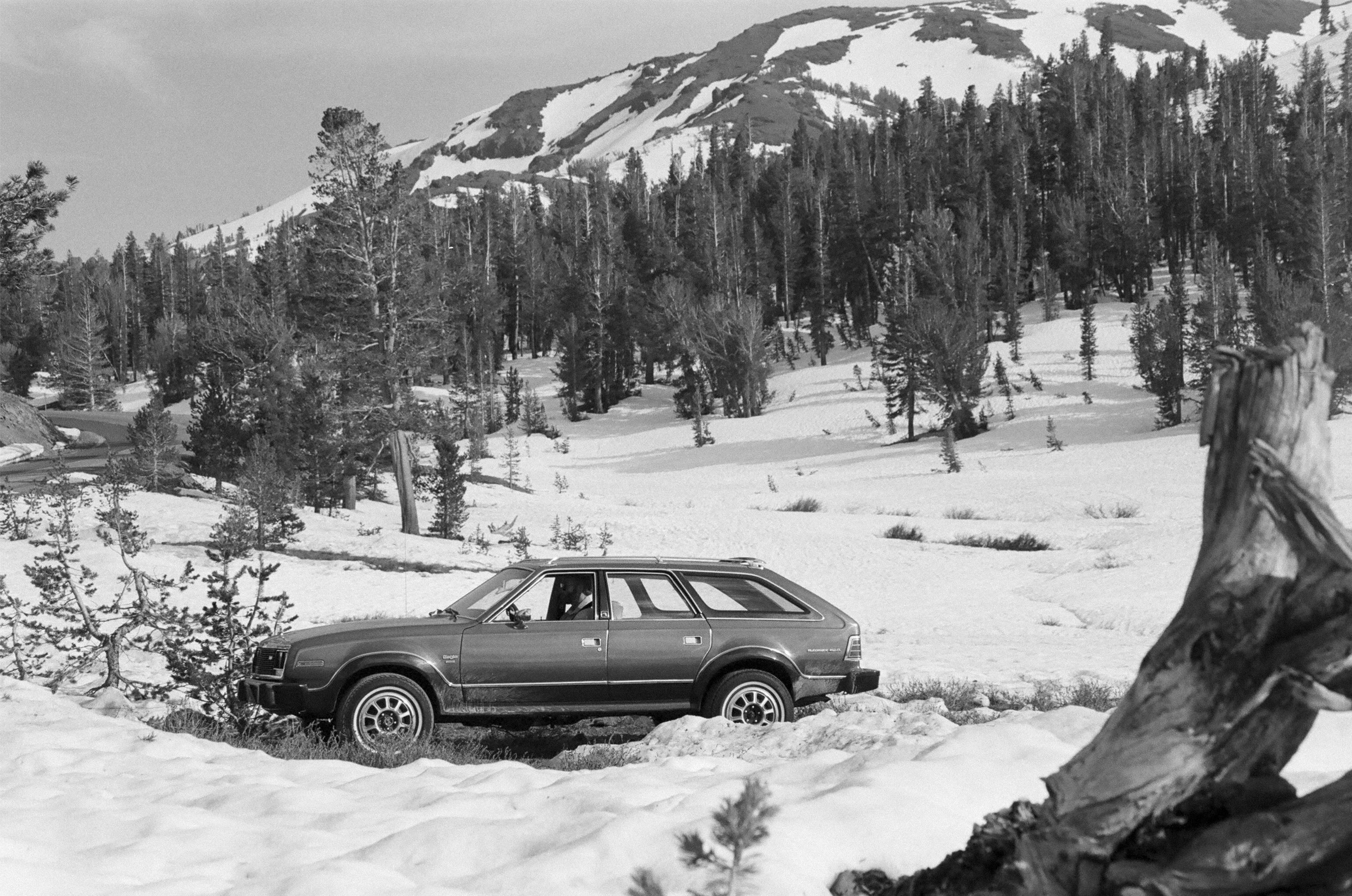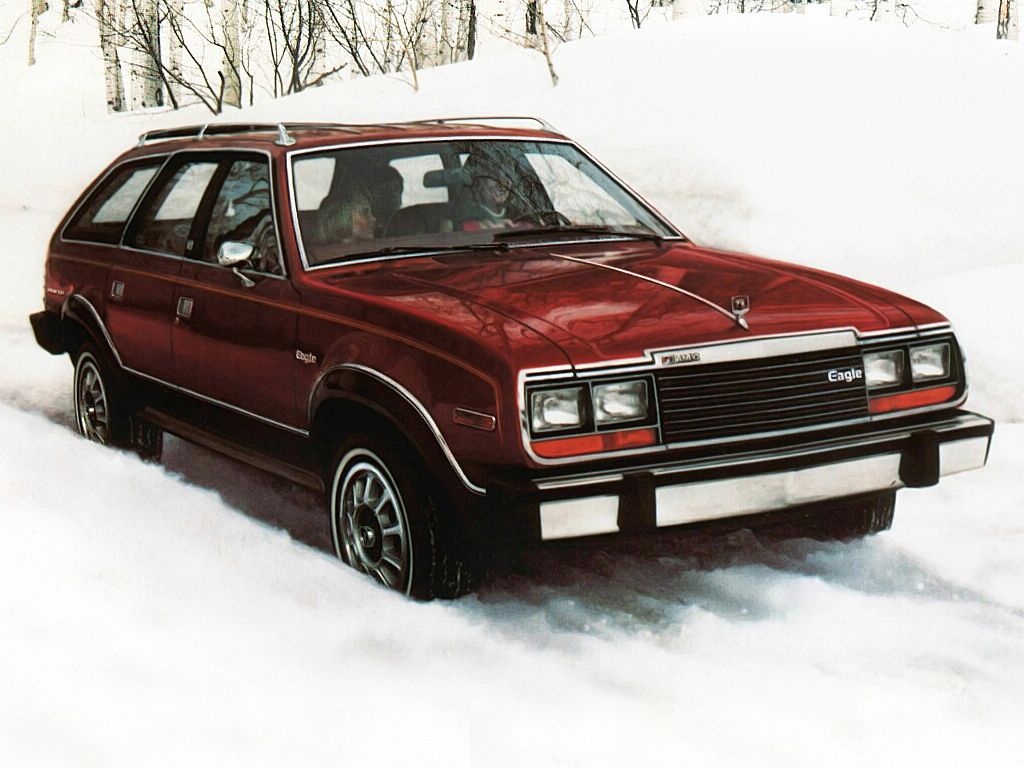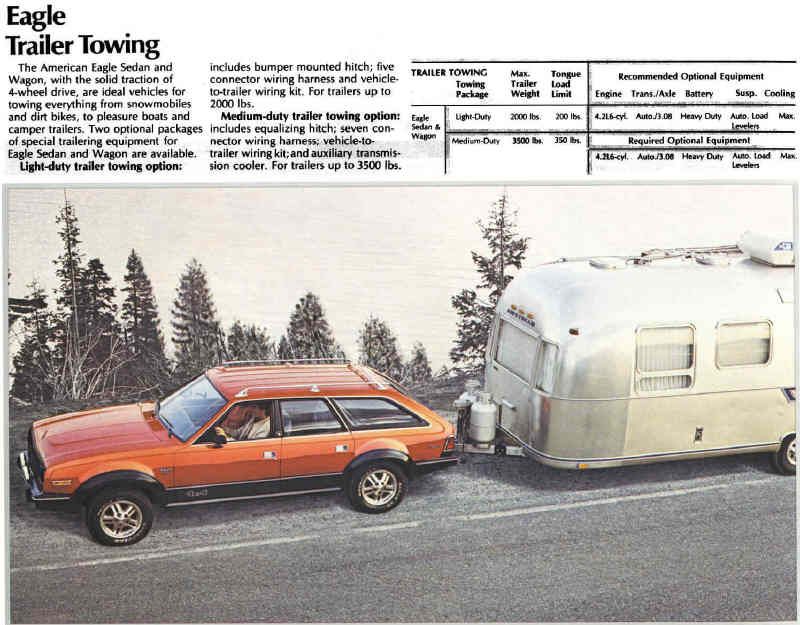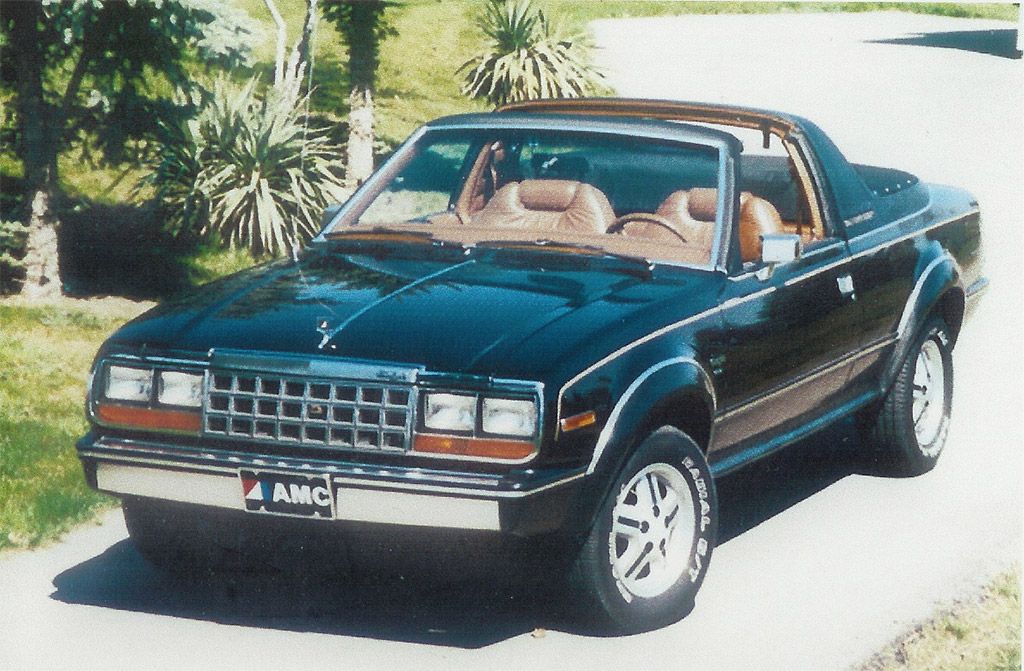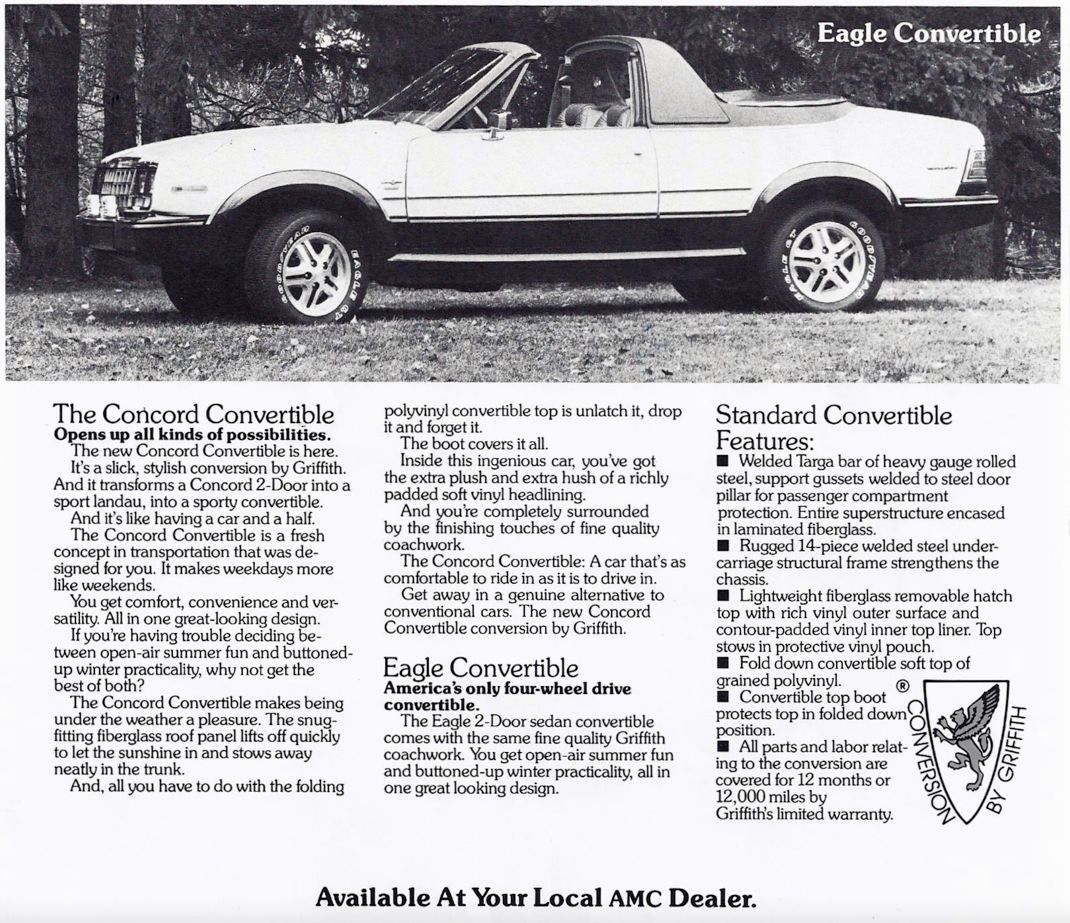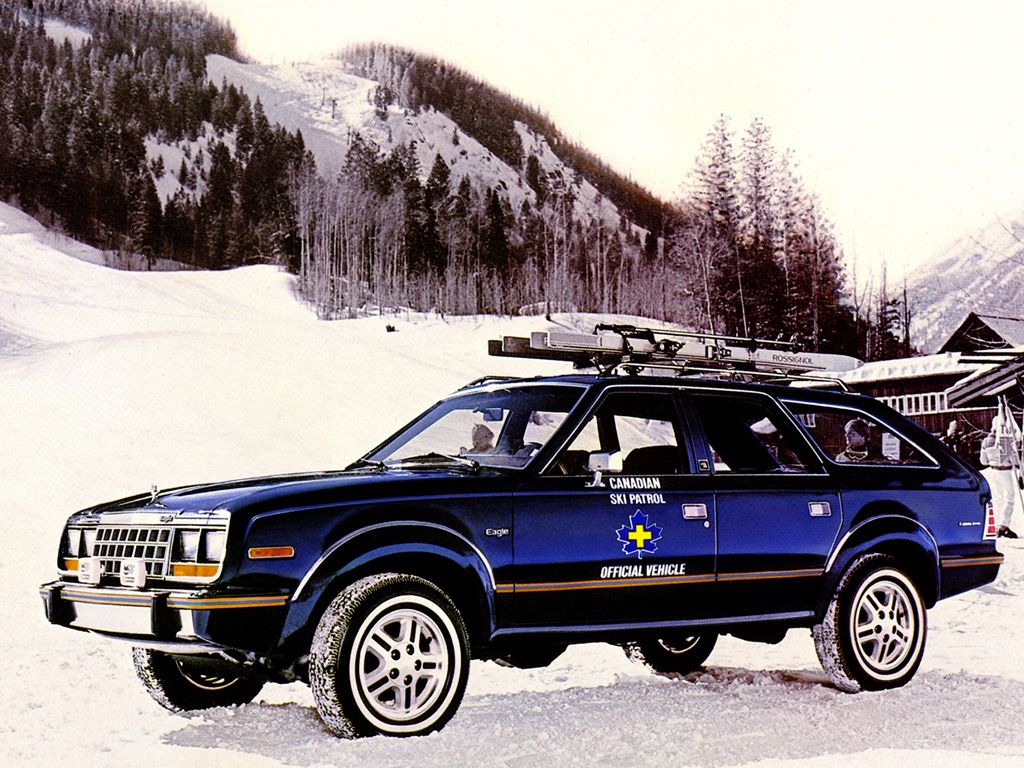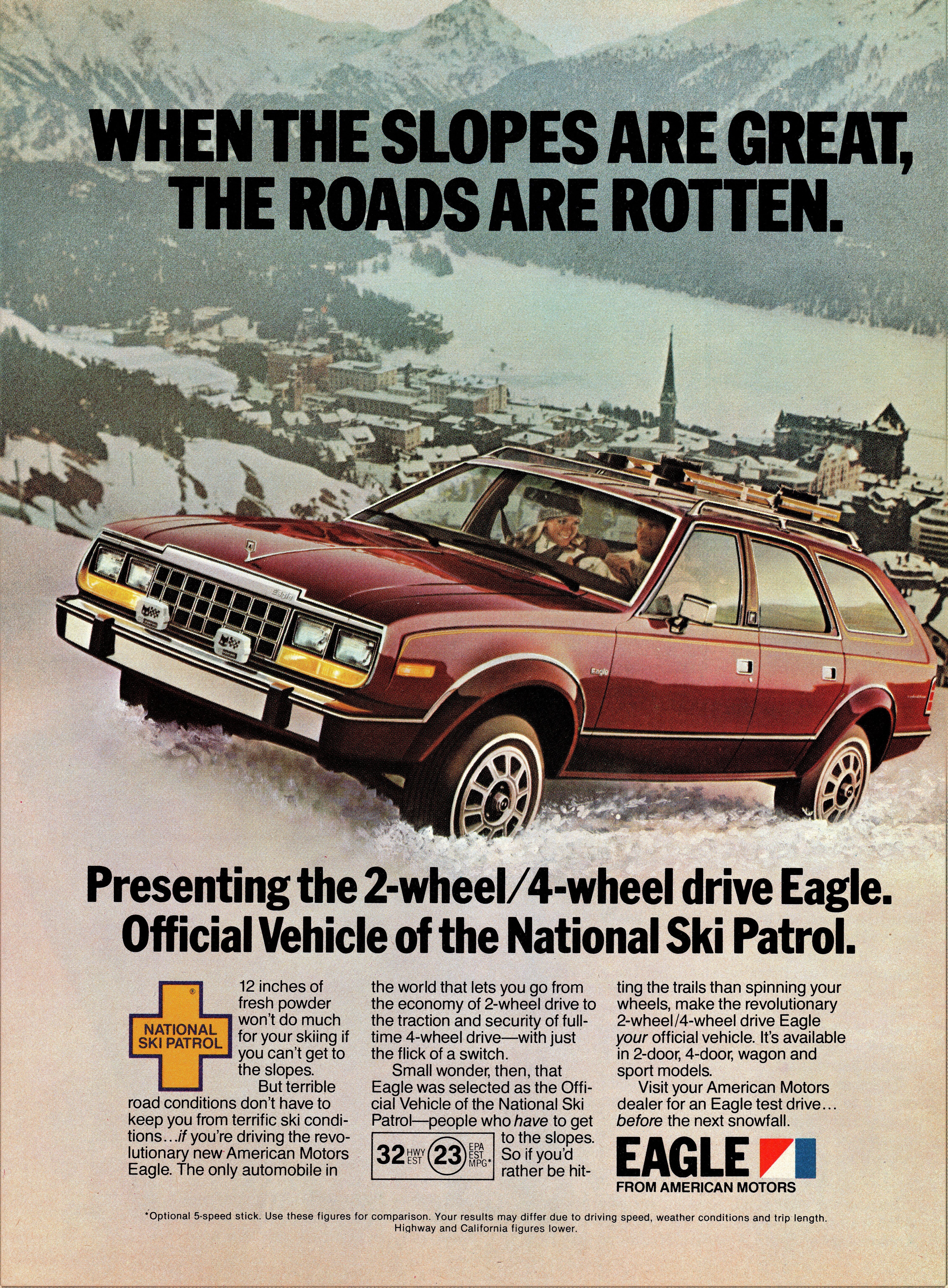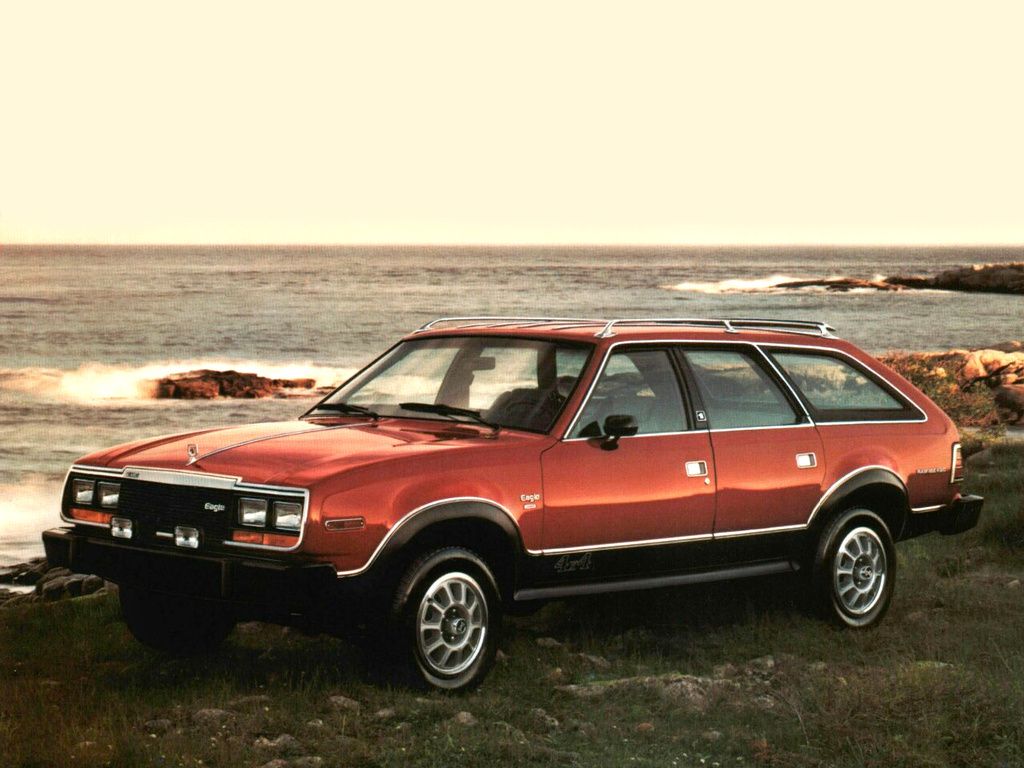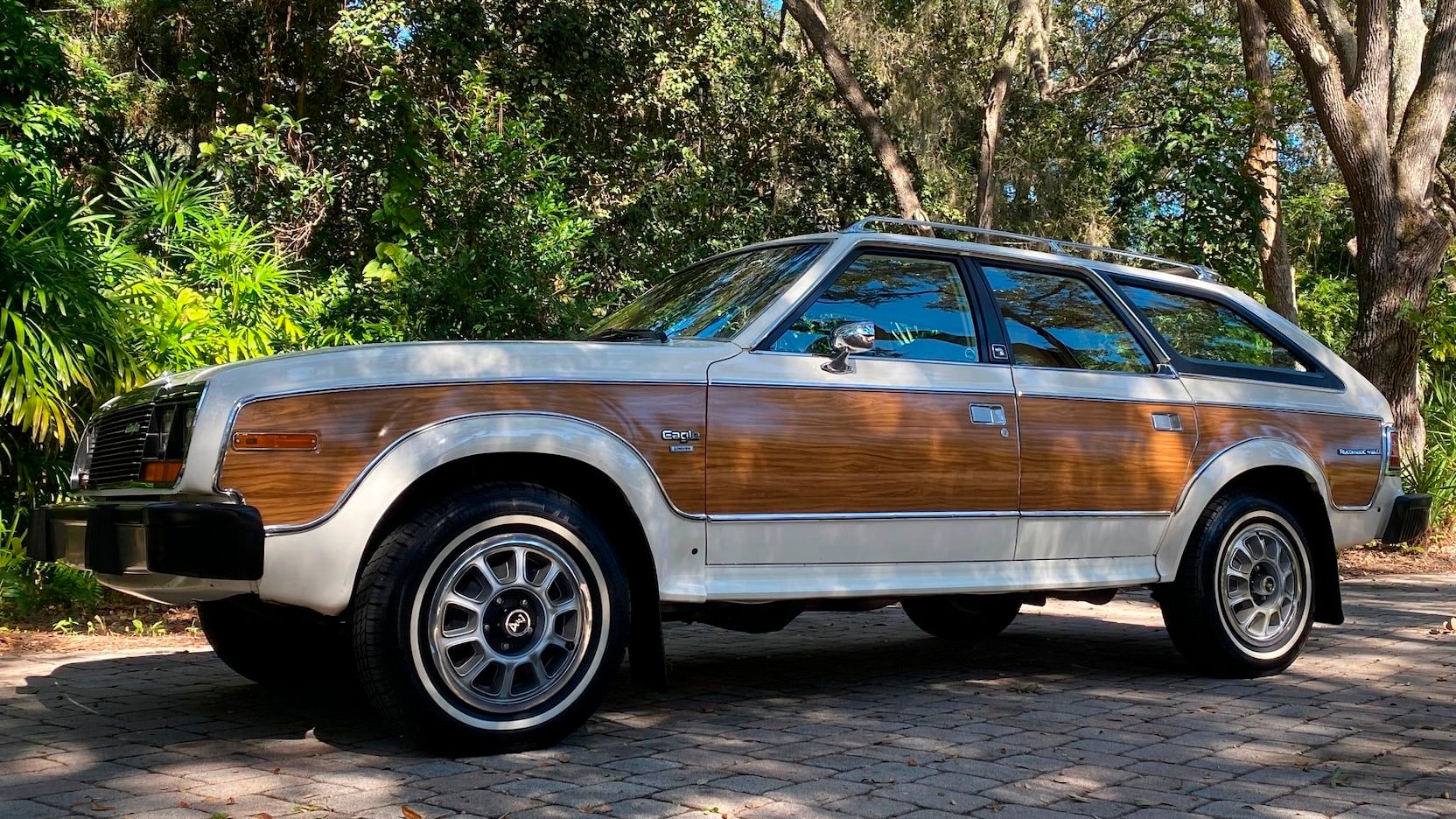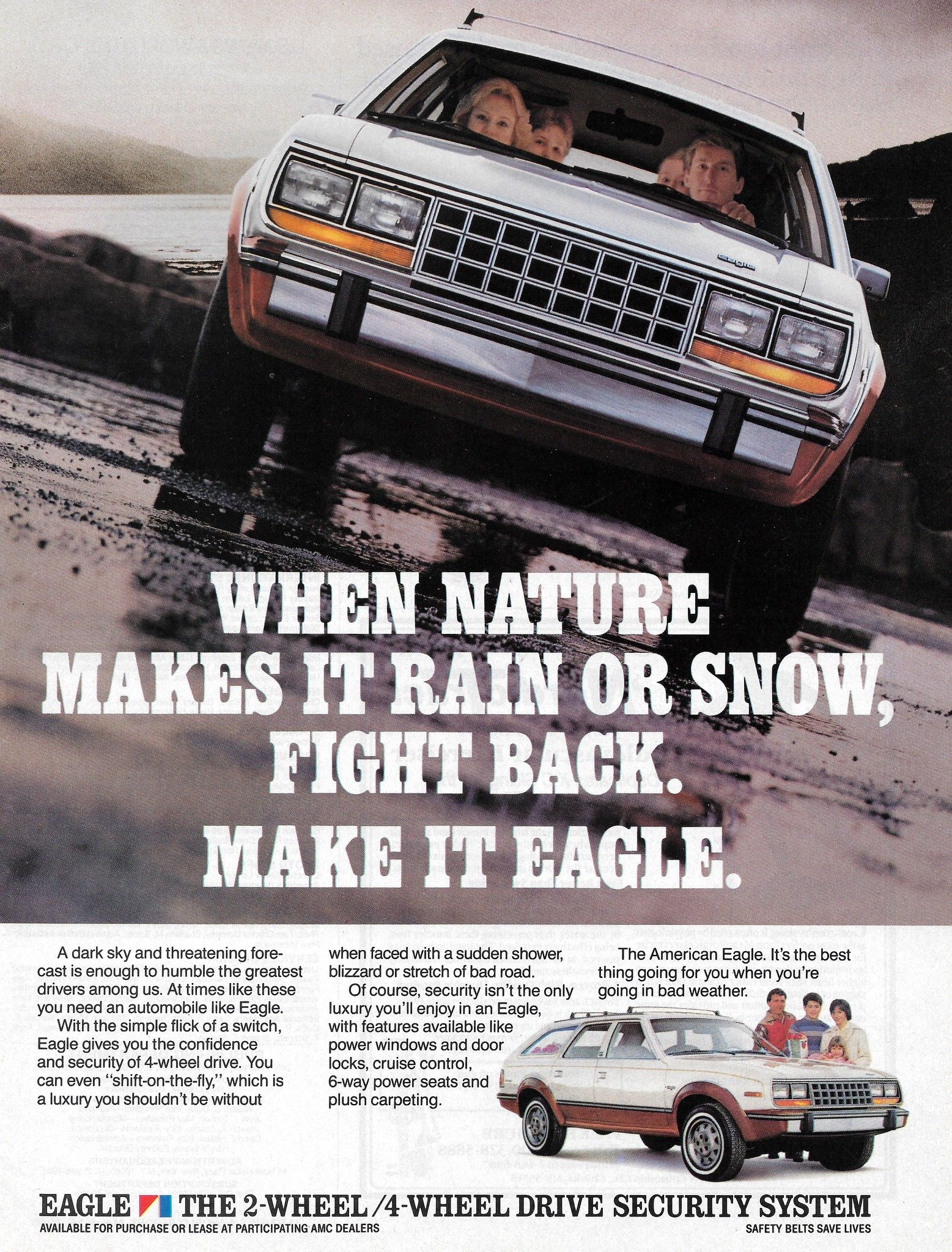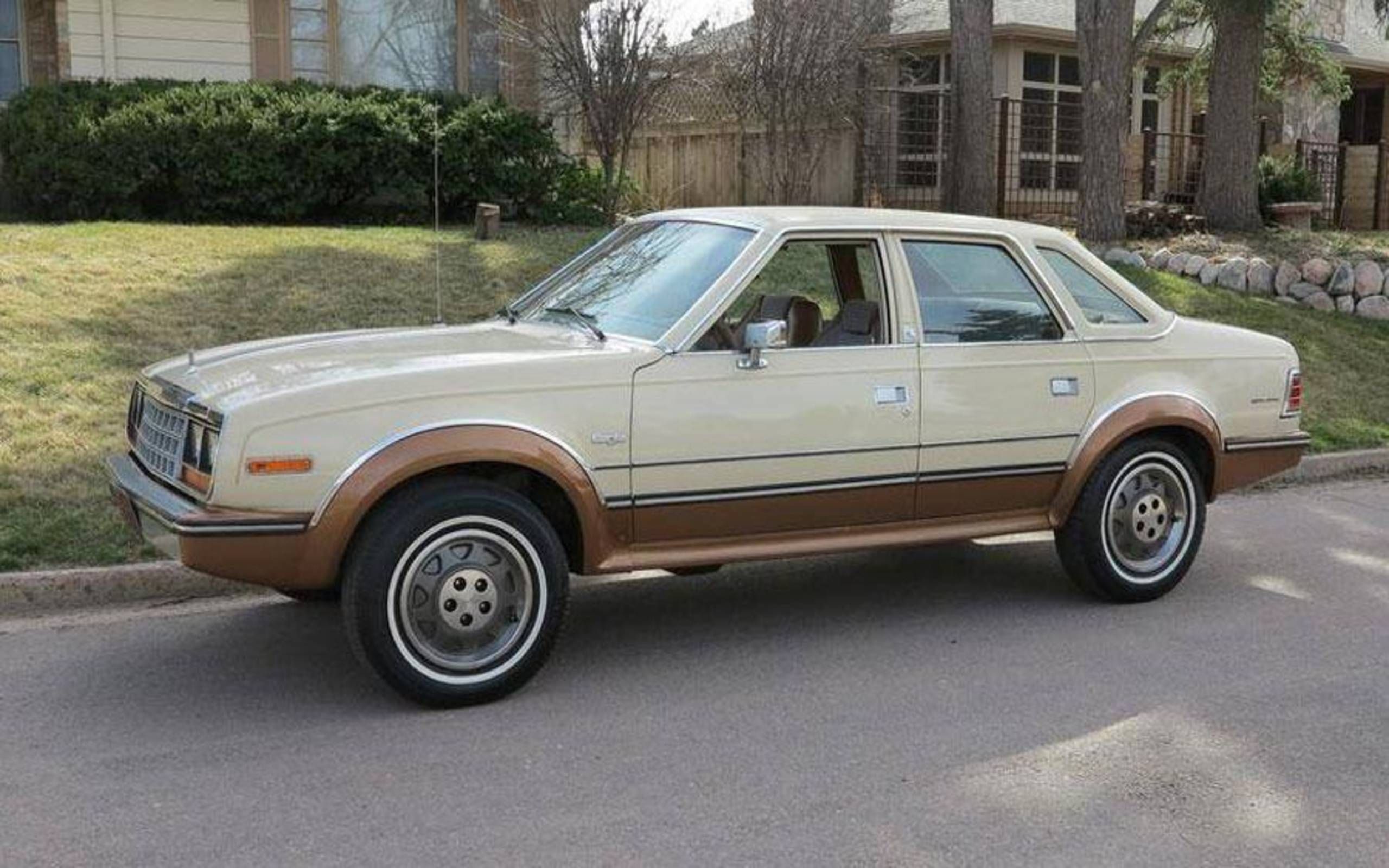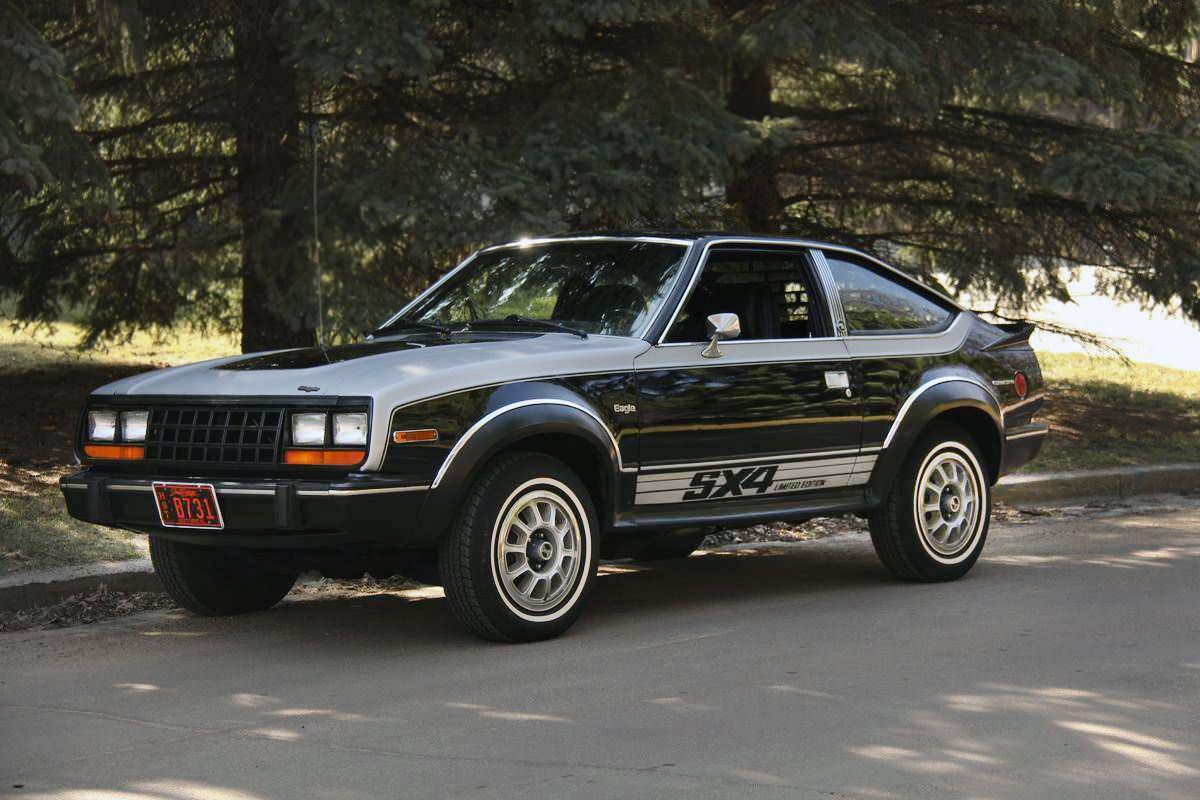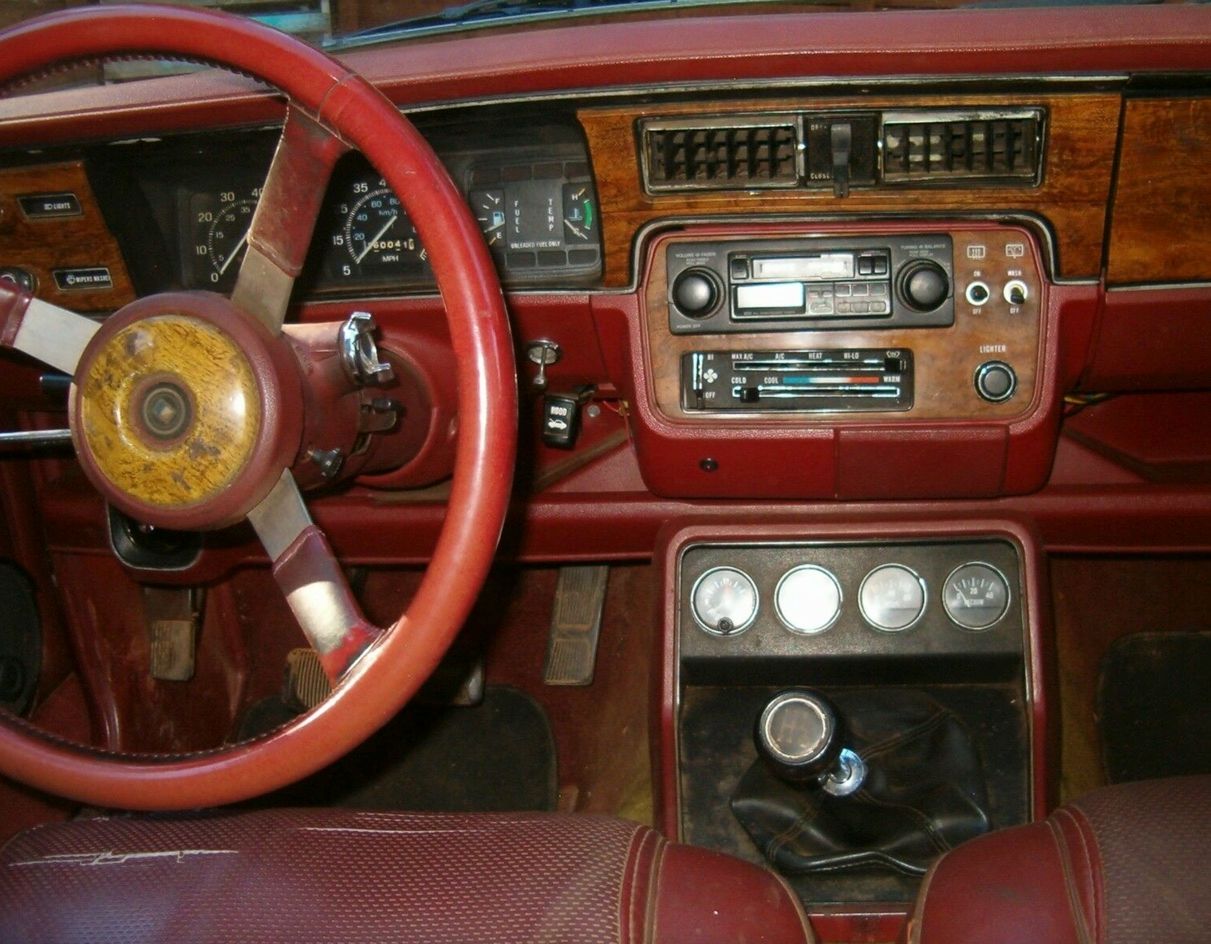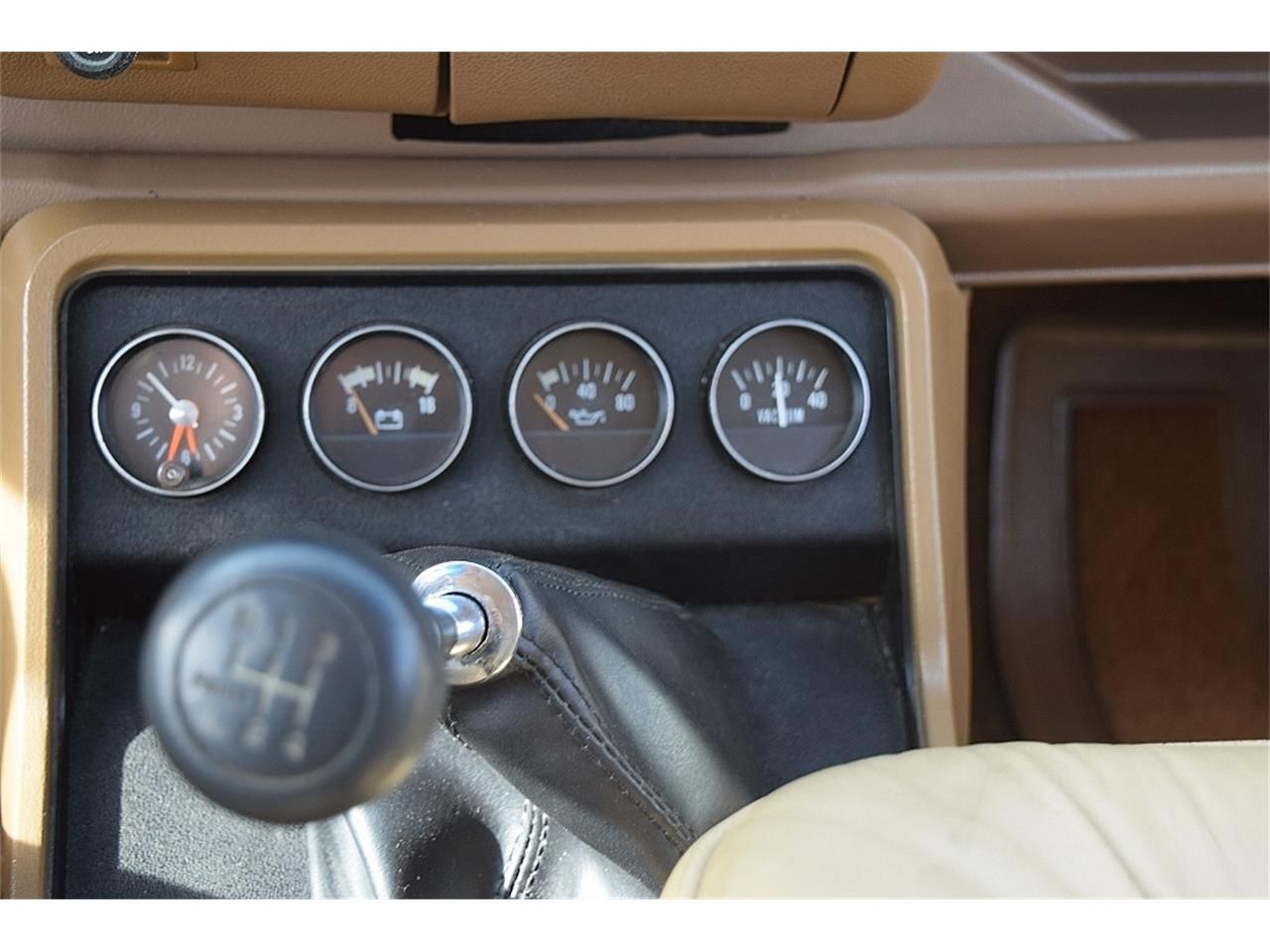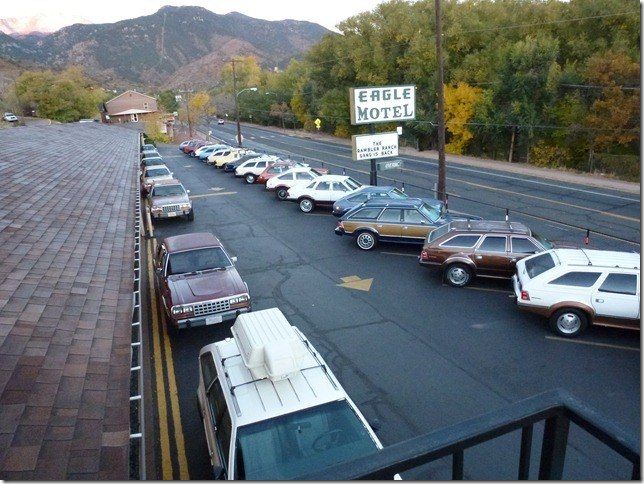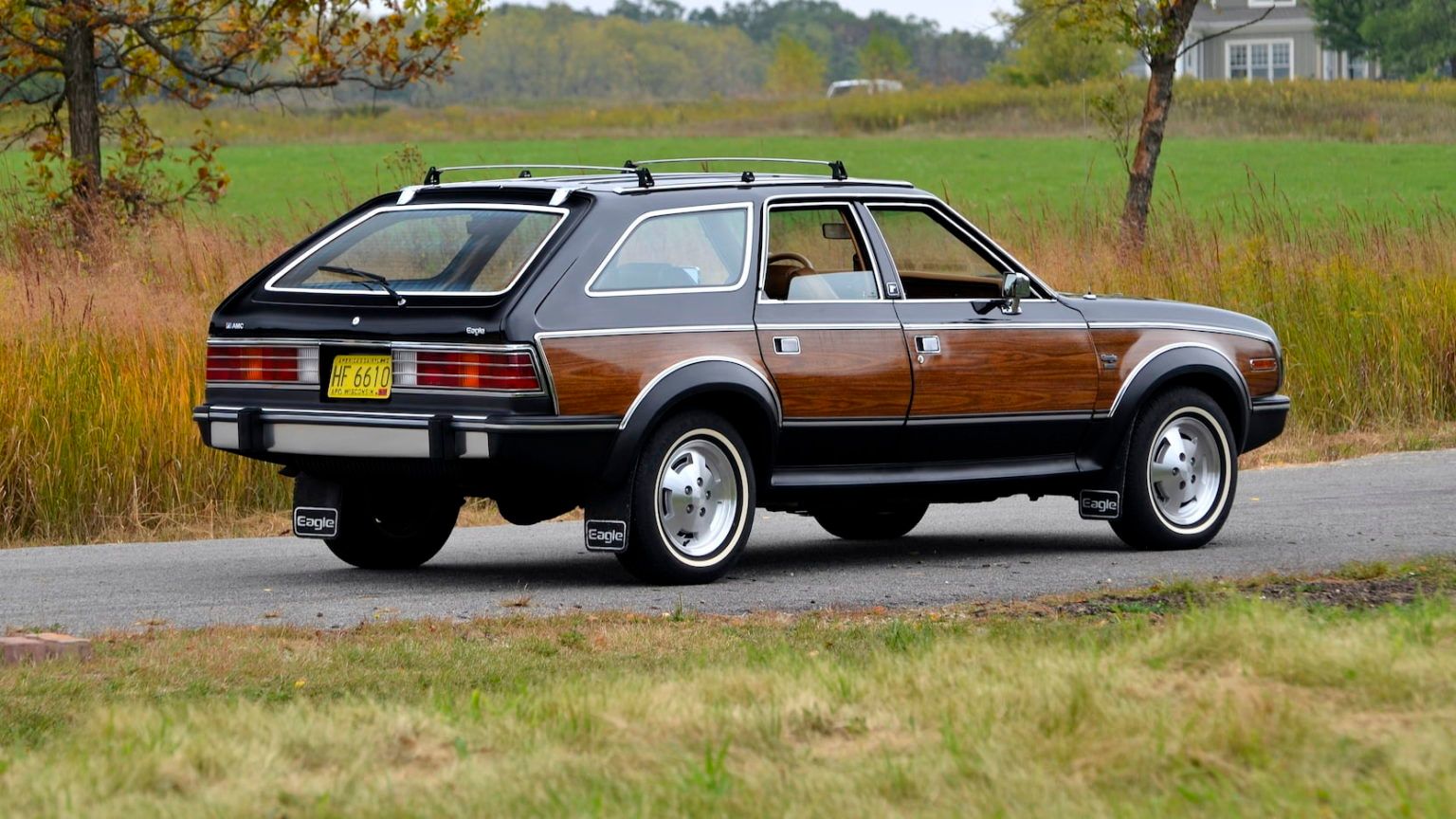It wasn't that long ago that four-wheel-drive was associated only with utilitarian pickups devoid of any comfort features. For families living off the beaten path, a comfortable car with features like climate control or an automatic transmission was not an option. This niche market needed a niche automaker to fill the void.
Thus, Roy Lunn, the man behind the XJ Cherokee, proposed the radical idea to AMC directors. Perpetually cash-strapped AMC was eager to move forward with the project with a strict condition, Lunn would have to make the adaptions off of an existing unit-body passenger car platform to keep production costs low. Staying in the budget, Lunn created a shockwave on the automotive scene when the Eagle landed on all fours for the 1980 model year.
AMC went on to sell approximately 192,000 Eagles over eight consecutive model years and essentially created the crossover vehicle market that continues to thrive to this day. So what are some of the qualities that made the Eagle so special?
10 Select-Drive AWD System
For the Eagle's initial 1980 model year, all cars came standard with a full-time AWD system. However, AMC already had something more advanced in the works. In 1981 AMC introduced the Select-Drive system and quickly made it standard across the Eagle lineup. For the first time, buyers could quickly turn their four-wheel-drive system on and off via a switch on the dashboard.
Though the vehicle had to be stopped to turn the system on and off, the entire process only took seconds and could easily be done at a stoplight or stop sign. AMC said the driver could use the system in every application from wet pavement to off-road terrain, and when you saw your path clear up, you could quickly switch back to 2wd for better fuel economy.
9 Advanced Rust Proofing
When AMC engineers created the Eagle with the understanding that it would often come into contact with unsavory conditions, between mud and snow, the Eagle's underbody had to be rugged to avoid premature rust. From the beginning, every Eagle came standard with "Ziebart factory rust protection" to ensure every Eagle was ready for whatever task the consumer had in store.
AMC included several features with the car's advertised rust protection system. Each vehicle had a five-year transferable warranty. If any body panels rusted through during this time, AMC would cover the cost of repair. The factory's additional precautions included aluminized exterior fasteners and screws, protective plastic undercarriage liners, fully galvanized exterior panels, and a primer bath where AMC dipped every body in a special Ziebart anti-rust formula. With these features in place, it is no surprise that many Eagles are still on the road forty years later.
8 Factory Towing Packages
As the car industry moved into the 1980s, smaller, compact, and more efficient models became the mainstream. With heavier emissions regulation, power and torque often suffered in many different cars. The AMC Eagle was classified as a compact or subcompact depending on body style by the U.S. government. Few contemporary cars at this time in the class offered a useful tow package. Despite the size of the Eagle, its rugged undercarriage was able to support a substantial tow package.
AMC produced two versions of the optional tow package, light-duty and medium-duty. The heftier medium-duty tow package included a heavy-duty transmission cooler and rear load-leveling shocks to allow the Eagle to remain level under full loads. The car's four-wheel-drive system also helped ease the loading of boats at soil boat ramps, as demonstrated in the above commercial. Both packages proved to be popular with the vehicle's commonly outdoor-minded customer base.
7 A Crossover Convertible
By 1981 AMC had adapted the Eagle into several body styles when a convertible surprisingly fell into the mix. Convertible conversion company Griffith approached AMC to form a contract for a limited run of convertibles. AMC would send unfinished Eagles to Griffith's facility to become "Sundancer" convertibles. Despite having another outfit complete the conversion, the Sundancer was an AMC-backed product. Consumers would order cars exclusively through official AMC dealerships. The dealerships themselves ordered many examples to have something to draw consumers into the showroom.
In mid-1981, Sundancer deliveries began to take place, and AMC created another first. An open-air convertible with luxury features like cruise control and climate control sitting atop a rugged lifted 4x4 undercarriage. Despite the minimal market, AMC managed to sell approximately 200 examples before canceling the project. Thanks to the car's general ruggedness, a large number of these examples survive today.
6 A Ski Patrol Favorite
When the Eagle was released in 1980, it quickly found a home with the Canadian Ski Patrol. By 1983 it became the official vehicle of Canada's national ski patrol. The nimble Eagle proved to be able to climb slopes and rescue skiers with ease. The wagon's sizeable flat cargo area allowed the injured an easy transfer down the mountain with much more comfort than the trucks they had used prior.
After proving itself on the slopes, AMC maintained a contract with the National Ski Patrol until Chrysler absorbed it. The National Ski Patrol later adopted more modern SUVs, but the Eagle will remain an unforgotten part of their history.
5 A Uni-Body Off-Roader
AMC is an early adopter of the unibody platform, with its predecessor Nash-Kelvinator adopting it in the late 40s. At the same time, the majority of other cars still retained a traditional body on frame configuration. Despite this early adoption prior to the mid-1980s, AMC still opted to keep its more rugged offerings such as the Jeep Cherokee and Wagoneer on a traditional body-on-frame platform. Off-roaders who relied on these vehicles for practical applications, for the most part, were not comfortable with a single unit body bending and turning over rough terrain.
If finances allowed it, we probably would have seen the AMC Eagle as a body on frame design, but thanks in part to AMC's strict budget, the Eagle had to be built off of the existing passenger car platform. AMC would pave the way for other four-wheel-drive offerings to become mainstream.
4 All-Weather Safety
The Eagle's unique Select-Drive system was designed for more than casually going off the beaten path. The driver could easily use the 4wd system in a multitude of daily driving scenarios. In poor rainy weather, the Eagle can be shifted into 4wd and still cruise at highway speeds for better traction.
Whether rain, snow, or just a bad road, the Eagle was committed to getting a family where they need to go, be it an elementary school or a ski lodge.
3 A Body Style for Everyone
The AMC Eagle wagon was the volume seller throughout the Eagles run and certainly the most memorable. AMC, however, offered this rugged platform in several varying body styles, giving consumers a wide range of options that had never been on the market before. For the first time, a consumer could have a lifted four-wheel-drive sedan capable of handling rugged mountain roads with ease.
AMC hoped to target younger buyers with the unique SX/4, a rally-ready coupe with all of the Eagles 4x4 capabilities. Despite the wide range of body styles, more than 60% of Eagles sold were wagons. By 1984, to streamline production and cut loss, the Eagle was available solely in sedan and wagon flavors. For the final 1988 model year, the wagon was the sole offering.
2 Available Five Speed Manual
A main selling point of the AMC Eagle was the ability to have a car with four-wheel drive and an automatic transmission. However, some buyers, especially those using the vehicle commercially, opted for the available five-speed-manual.
While not a popular option, it was available for most of the Eagle's run. Earlier examples had a four-speed-manual, as shown above. Today a manual Eagle is coveted by many enthusiasts. Despite being few and far between, they do occasionally come up for sale.
1 An Unparalleled Legacy
AMC always served a special breed of buyers, consumers that wanted something different. Maybe that is why even 33 years after the company dissolved, they still retain a strong, unwavering fan base. A direct offshoot of that, the AMC Eagle has become a cult classic for those that still yearn to drive something different—for many, still fulfilling the exact needs they did 41 years ago at the car's introduction. The AMC Eagles Den, a club and forum dedicated to this unique automobile, is an excellent representation of the loyalty many have for this car.
For those interested in purchasing an Eagle, the helpful community will help you find parts and troubleshooting issues or go to an event so your Eagle can nest with its brethren. The fact, so many of these birds are still working hard for their owners is a testament to the quality of the car and that fantastic little company from Kenosha, Wisconsin.

